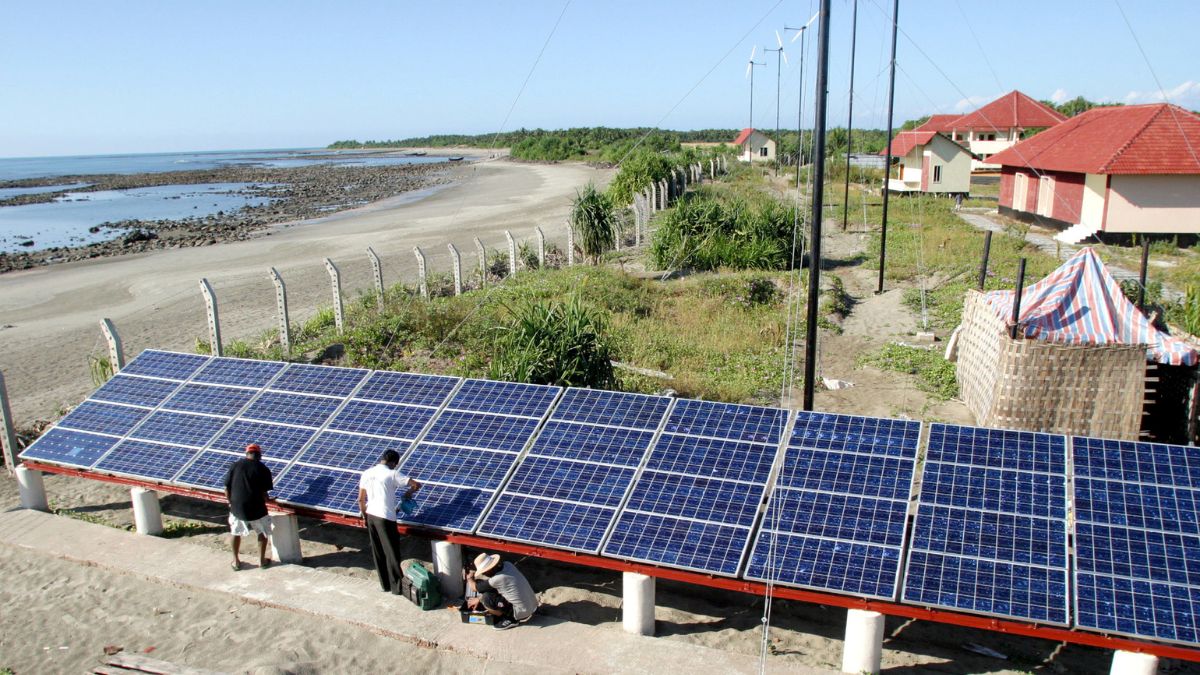St. Martin’s Island, a three-square-kilometre stretch of land located in the northeastern part of the Bay of Bengal, has unexpectedly become a focal point in Bangladesh’s ongoing political turmoil. This small coral island is home to approximately 3,700 residents who are primarily engaged in fishing and farming.
The island’s strategic location near Myanmar and its proximity to vital maritime routes have piqued the interest of major global powers, particularly the United States.
What are the recent claims?
Sheikh Hasina, the recently ousted Prime Minister of Bangladesh, has reportedly made several bold claims regarding the United States’ interest in St. Martin’s Island. In a message to her supporters, Hasina stated, “I could have remained in power if I had surrendered the sovereignty of St. Martin Island and allowed America to hold sway over the Bay of Bengal.”
This is not the first time Hasina has hinted at the US’s interest in the island. Earlier this year, she claimed that “a white man” had offered her a smooth return to power in exchange for an airbase on St. Martin’s Island.
Watch:
However, Hasina’s son Sajeeb Wazed refuted claims that his mother made any remarks about her resignation. He strongly dismissed the accuracy of a newspaper report, labelling it as entirely untrue and fabricated.
The recent resignation statement attributed to my mother published in a newspaper is completely false and fabricated. I have just confirmed with her that she did not make any statement either before or since leaving Dhaka
— Sajeeb Wazed (@sajeebwazed) August 11, 2024
Impact Shorts
More ShortsDespite these assertions, the US State Department has categorically denied any such discussions, with spokesperson Matthew Miller stating, “We have never engaged in any conversations about taking over St. Martin’s Island.”
What does St. Martin’s history tell us?
St. Martin’s Island, also known as Narikel Jinjira or Coconut Island, has a history that dates back to the 18th century when it was first settled by Arabian merchants who named it ‘Jazira.’
The island was later included in British India in 1900 and named after a Christian priest, Saint Martin. Following the Partition of 1947, the island became part of Pakistan, and later, Bangladesh after the Liberation War of 1971.
The island’s status as Bangladeshi territory was solidified by a 1974 agreement between Bangladesh and Myanmar, and later affirmed by the International Tribunal for the Law of the Sea (ITLOS) in 2012, which recognised Bangladesh’s sovereignty over the island.
What is the strategic military importance of St. Martin’s Island?
St. Martin’s Island holds significant strategic value, primarily due to its location near the Strait of Malacca, one of the world’s busiest maritime trade routes. A military base on the island would provide any country with unparalleled oversight of the Bay of Bengal, including surveillance of Chinese investments and activities in the region around the Strait of Malacca.
Also Read: 13 things about St Martin's Island
The island’s location also allows for the potential monitoring of trade and military activities in the region, making it a highly coveted asset for global powers like the United States.
Does the island contribute to Bangladesh’s economy?
Beyond its strategic military value, St. Martin’s Island is also a vital economic and environmental asset for Bangladesh. The island falls within Bangladesh’s Exclusive Economic Zone (EEZ), granting access to valuable marine resources such as fish, oil, and gas.
The island’s unique ecosystem, including its coral reefs and diverse marine life, underscores the need for conservation efforts. Additionally, the island is a popular tourist destination, attracting visitors with its pristine beaches and cultural heritage.
What are the maritime boundary disputes around the island?
The island’s proximity to Myanmar has also made it a point of contention in maritime boundary disputes. Despite the 2012 ITLOS ruling, Bangladeshi fishermen have faced detentions and warnings from Myanmar’s naval forces while operating near the island.
The Rohingya crisis has further complicated the situation, with over 700,000 Rohingya refugees fleeing to Bangladesh in 2017 following a violent crackdown by Myanmar.
The influx of refugees has raised concerns about the island’s security, particularly with reports suggesting that members of the Arakan Army, a Myanmar-based insurgent group, are attempting to stake a claim on the island.
What does the US hope to gain if it acquires St. Martin’s Island?
The United States’ interest in St. Martin’s Island is perceived by some as part of a broader strategy to counter China’s influence in South Asia. The US has reportedly suggested that Bangladesh join the Quad alliance, and there have been unconfirmed reports that Washington proposed leasing the island for a military base.
However, these claims have been met with skepticism, with the US State Department repeatedly denying any intentions to acquire the island. “We value our partnership with Bangladesh,” Miller highlighted, adding that the US remains committed to supporting democracy and free elections in the country.
The potential US acquisition of St. Martin’s Island has also sparked concerns among Bangladesh’s neighbours, particularly India and China. A US military presence on the island could serve as a check on Chinese ambitions in the region, particularly given China’s ongoing investments in the Belt and Road Initiative (BRI) through Bangladesh and Myanmar.
Also Watch:
Conversely, the island’s strategic location could also be used to monitor and potentially disrupt Indian shipping in the Bay of Bengal.
While the United States has denied any plans to acquire the island, the geopolitical significance of St. Martin’s cannot be understated.
With inputs from agencies


)

)
)
)
)
)
)
)
)



